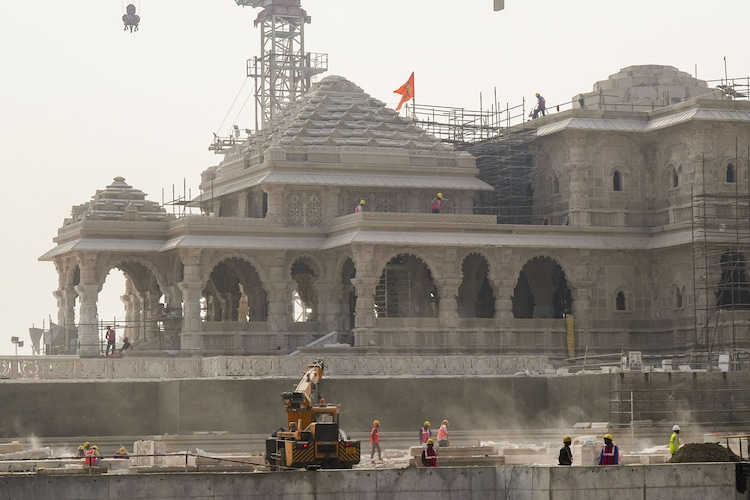In a historic collaboration, India witnessed a unifying effort to construct the Ram Temple in Ayodhya, marking a significant moment in the country’s cultural and religious landscape. The journey toward the realization of this longstanding aspiration was paved with diverse contributions and a collective spirit.
The genesis of this collaborative endeavor can be traced back to the Supreme Court’s landmark verdict in November 2019, which resolved the decades-long Ayodhya dispute by granting the disputed land for the construction of the Ram Temple. This legal clarity laid the foundation for a harmonious and inclusive effort to bring the temple to fruition.

Source:- ndtv
One of the key elements of this collective venture was the involvement of various socio-religious organizations, cutting across linguistic, regional, and cultural lines. The Rashtriya Swayamsevak Sangh (RSS), Vishva Hindu Parishad (VHP), and other affiliated groups played instrumental roles in mobilizing support and resources for the temple’s construction. Their nationwide network helped channelize the enthusiasm and dedication of millions of individuals who contributed financially and volunteered their time.
Source:- times now
The fundraising campaign for the temple emerged as a symbol of unity, with people from all walks of life participating wholeheartedly. From the common citizens to prominent business leaders, everyone contributed to the cause, reflecting a shared commitment to the cultural and spiritual heritage of India. The transparent and accountable manner in which the funds were managed further bolstered public trust and participation.
The government’s active support and facilitation also played a crucial role in the successful collaboration. Various state administrations worked in tandem with the central government to streamline the bureaucratic processes and ensure a smooth execution of the project. This proactive approach helped overcome potential obstacles and demonstrated a commitment to the principle of secularism, acknowledging the significance of the temple for a large section of the population.
The construction process itself became a symbol of craftsmanship and architectural excellence, blending traditional techniques with modern technology. Artisans, architects, and engineers from different parts of the country converged to contribute their skills, creating a masterpiece that reflects the rich cultural tapestry of India.
the construction of the Ram Temple in Ayodhya exemplifies how a diverse and pluralistic society like India can come together to achieve a shared cultural and religious goal. This collaborative effort, driven by inclusivity and mutual respect, not only resulted in the physical manifestation of the temple but also strengthened the social fabric of the nation.
Share your views in the comments

